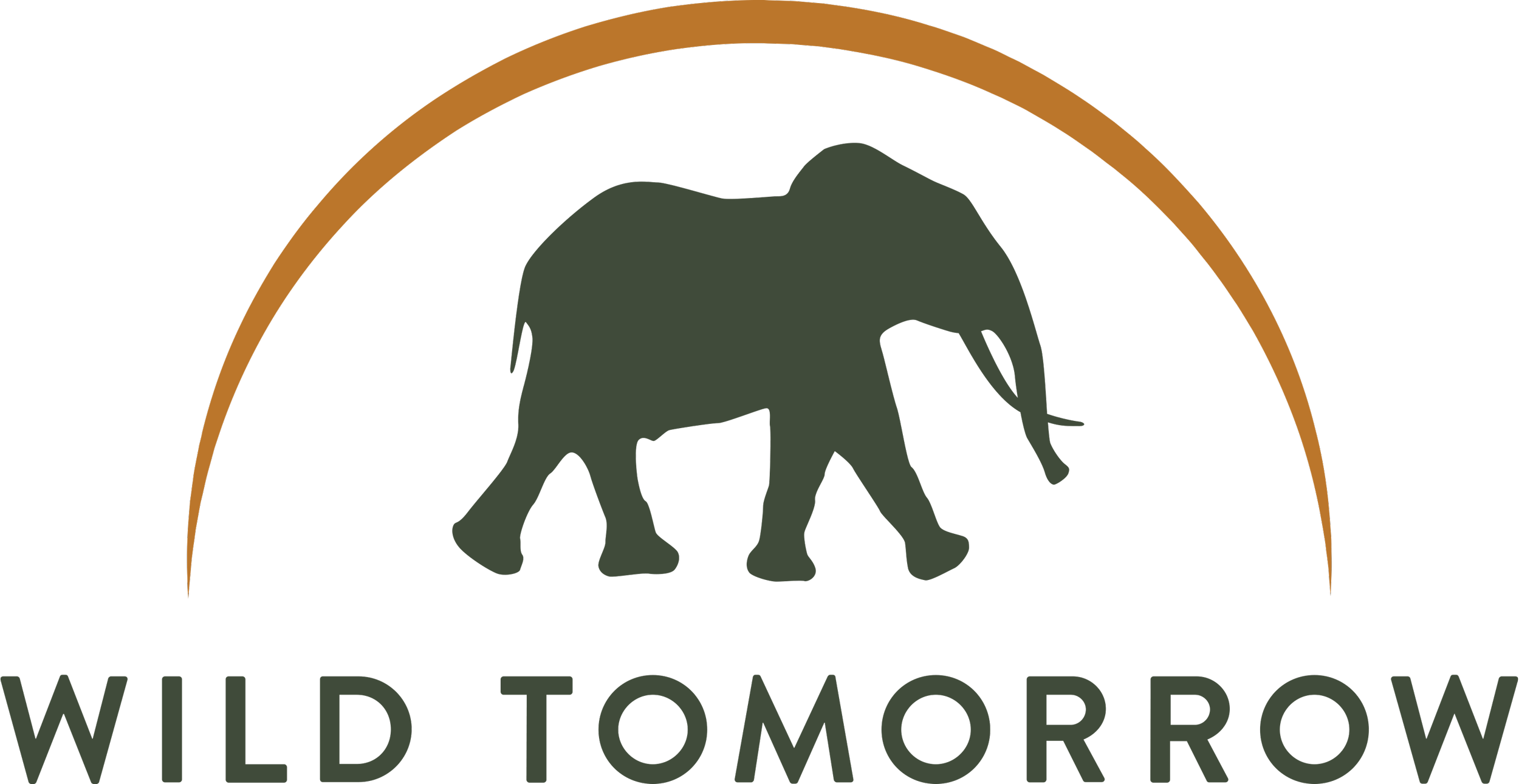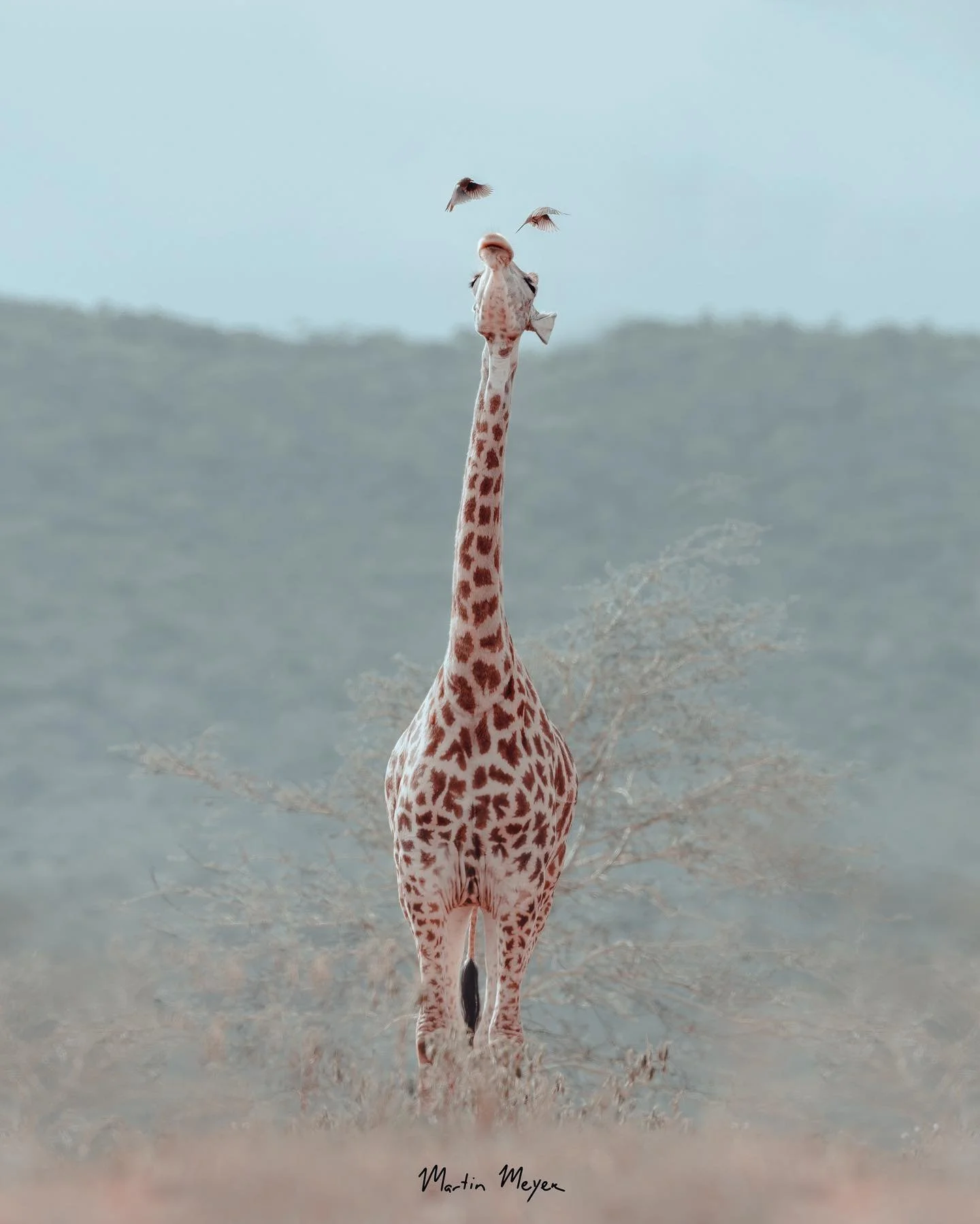A NEW GIRAFFE CALF AT UKUWELA
We are delighted to introduce our newest giraffe calf, a very cute wild arrival at Wild Tomorrow’s Greater Ukuwela Nature Reserve in South Africa. Check out video footage of our new calf and learn about the important role of giraffe in ecosystems. Read about their wider meaning as a symbol of hope and restoration in our latest blog below.
With super straight ossicones, this giraffe calf is an adorable, easily-recognisable addition to Wild Tomorrow’s Greater Ukuwela Nature Reserve in South Africa. Photo Credit: Nastassia Maltsava, who visited over the new year just in time to see our cute arrival.
It was a sweet start to the end of the year at Wild Tomorrow's Greater Ukuwela Nature Reserve in South Africa with the arrival of a giraffe calf on the 1st of December. This giraffe calf marks the ninth calf born since we began reintroducing giraffe to Ukuwela in 2017 as part of our habitat restoration and re-wilding program.
With each giraffe calf we celebrate the rebirth of nature. Ukuwela was degraded farmland just five years ago, at risk of destruction for the expansion of commercial agriculture. This calf is a symbol of what we are working to achieve: the restoration and regeneration of fragile, threatened habitats in a biodiversity hotspot, and the protection and reintroduction of all the incredible species that natively call these ecosystems home. With each new thread of life, including the restoration of our giraffe population at Ukuwela, complex connections and interdependencies within ecosystems are restored.
An adult giraffe at Ukuwela reaches for the leaves and flowers of an Acacia tree. Photo by our Ambassador Nadja Rutkowski.
As a keystone species the giraffe restores balance to their wild homes. They eat flowers, leaves and fruits that are up high where other animals cannot reach, spreading these seeds. Giraffes lives are so intertwined with one of their favorite foods, the leaves and twigs of Acacia trees, that some seedlings do not germinate until they have passed through a giraffe's digestive system. Giraffes also help to pollinate the trees like Acacias. Pollen attaches to their heads and necks from rubbing against the tree’s flowers and is then spread from tree to tree. Giraffes act as an early-warning system for other animals, due to their height and ability to see danger from far away. An alarm reaction by a giraffe quickly alerts zebra, wildebeest and ostrich who are often seen browsing near their taller friends. They are also a host for ticks, meaning a nice source of food for the African oxpecker bird, which helps keep giraffes healthy by feasting off the bugs and larvae. Everything is connected in the web of life.
An adult giraffe at Ukuwela and two oxpeckers. Photograph by our amazing photographic Ambassador, Martin Meyer.
And what is the #1 predator to giraffe? Humans! Human population growth, habitat loss from human activities, poaching, illegal trade, civil unrest, and climate change are causing today’s 40% decline in giraffe populations. Today, giraffes are listed as vulnerable to extinction on the IUCN Red List of Threatened Species. And it's not just giraffe. Humans are threatening all life on Planet Earth, our life support system, with one million plant and animal species now at risk of extinction. Urgent action is needed this decade to reverse the trend and avoid a mass extinction event. Every species, from giraffe to ticks, has a role to play in the tapestry of interconnected life. If we do not protect species by protecting their last wild homes; if we continue over-consuming and wasting natural resources; and if we do not slow (and ultimately reverse) climate change, then this tapestry will fall apart, thread by thread.
Fortunately nature is resilient. We can restore and re-wild places we have destroyed and degraded. We have shown it is possible at Ukuwela, and this little calf is proof of what is possible. Threatened species can be given a second chance. And there is a growing number of people who are turning hope into action to fight for the survival of wildlife and their wild places. And as Jane Goodall says, "We must all join that fight before it is too late."
Join us in this hopeful journey to re-wild our world together.
References:
Giraffe Facts. Thanks to our friends at the Anne Innis Dagg Foundation. www.anneinnisdaggfoundation.org/giraffefacts
The new-born giraffe calf with its new wild friends: a zebra and foal.



